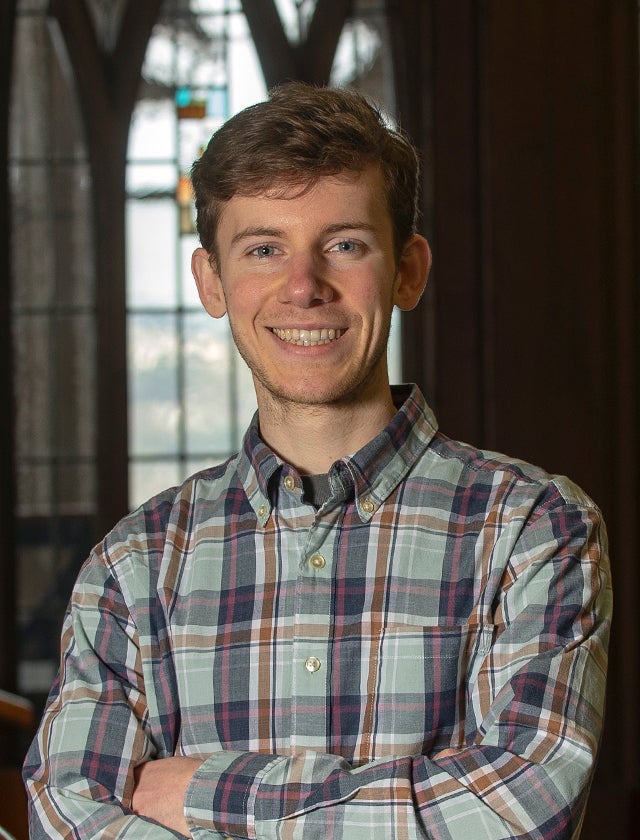
Subscribe to Pittwire Today
Get the most interesting and important stories from the University of Pittsburgh.This engineer wants to put autonomous vehicles in the sky.
Asher Hancock has been interested in flight for as long as he can remember.
But there was one moment when the Beaver, Pennsylvania, native knew he was hooked.
“I went to NASA’s Kennedy Space Flight Center, down in Florida. Standing underneath the Saturn V rocket they have there — it was an engineering marvel,” he said. “Since then, I knew I wanted to work on something related to space or flight.”
A 2022 graduate of Pitt’s Swanson School of Engineering who majored in mechanical engineering with minors in computer science and mathematics, Hancock has spent the past few years rocketing to new heights himself: first with a 2021 Goldwater Scholarship and now a graduate fellowship from the National Science Foundation and one of the most prestigious awards available to students in the U.S. — a Churchill Scholarship.
The scholarship funds a year of study at the University of Cambridge in the U.K., supporting students in science, math and engineering. Hancock, one of 18 awardees this year, is the fifth Pitt student to be honored by the Winston Churchill Foundation of the United States.
“The Churchill Scholarship is one of the most selective science scholarships in the country; it is aimed almost exclusively at emerging research scientists who are already on the path to completing high-level doctoral research,” said Aidan Beatty, a scholar-mentor in the University Honors College who advised Hancock. “Asher is clearly on that kind of ambitious and upward-moving trajectory.”
In his research, Hancock is interested in developing better autonomous systems by combining two very different fields: machine learning and control theory. He explains the latter field with the example of a car’s cruise control.
“Let’s say you’re on the highway, and you set your cruise control to 65. But then you start going downhill,” he said. “How does your car know that it needs to get back down to 65? And then how are you going to make that happen automatically?”
Decisions like that can require complex mathematics that bring together many variables. Combine that regimented approach with the newer, fuzzier field of machine learning and you get an exciting crossover that could inform new developments in how to manage autonomous travel.
Since his Florida trip, Hancock has also had several opportunities to work with NASA. As part of an internship through the NASA Pathways program, he worked on a rocket that will be used to put astronauts back on the Moon, and he also worked on the planned replacement for the International Space Station.
“It really kind of reinforced to me the value of teamwork and collaboration as far as trying to solve these really technical challenges,” he said. “Rocket science gets its notoriety for being difficult. You can’t do everything alone.”
And according to one of his advisors, Hancock has those exact skills, excelling as a communicator and collaborator.
“What is really amazing about Asher is not only is he just incredibly smart, but he has a lot of perseverance and fantastic communication skills, which is atypical of an engineer,” said Matthew Barry, a visiting assistant professor in the Swanson School of Engineering.
When given projects, Hancock would learn so fast that he was teaching his own mentor. “He quickly exceeded my knowledge and expertise,” Barry said. “It’s been amazing to see him go through this process. He has everything it takes to be successful in this field.”
Hancock is deciding between a few options for PhD programs after his year in Cambridge. As for his research, he now has his sights set on a problem a little bit closer to home than going to space — but one that’s perhaps even more futuristic.
“We have these autonomous vehicles, and people want to drive them to work,” he explained. “Trying to take those vehicles and put them in the sky, I think that’s a really interesting application area that I think my doctoral work will be geared toward.”
— Patrick Monahan, photo by Mike Drazdzinski



